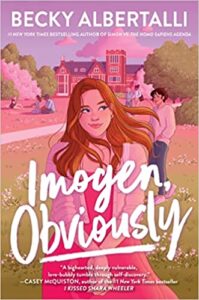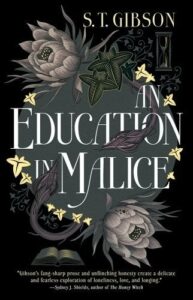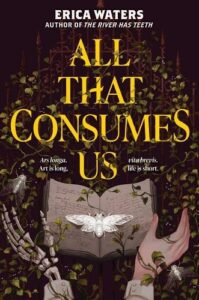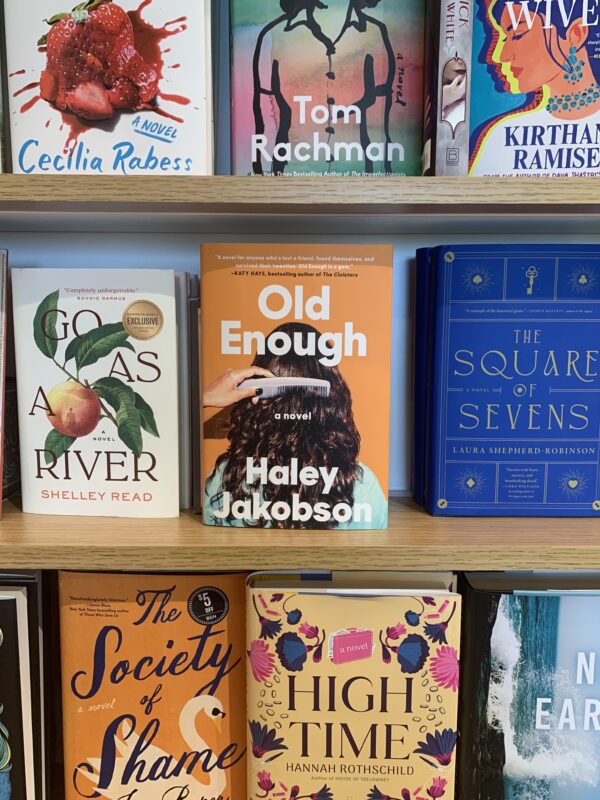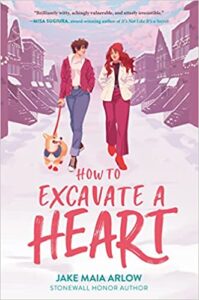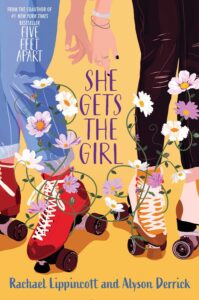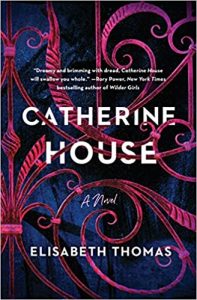Buy this from Bookshop.org to support local bookstores and the Lesbrary!
Imogen Scott has endless experience as a straight queer ally. Her friends are pan and bi, her sister is out, and she never misses a Pride Alliance meeting. While visiting her best friend Lili at college, who has her own little queer community, Imogen takes “supportive” a step further. She pretends to be Lili’s ex-girlfriend and bi. The longer she wears the label, the more she wonders if it fits… especially when she’s in the company of Lili’s new friend, Tessa. Can Imogen keep her story straight, or is she finally starting to see who’s staring at her in the mirror?
This recent streak of bi/sapphic YA books (One Last Stop, Perfect on Paper, and now this) has left me slain. It’s all too much. I am FEELING too much. Be still, thy bi heart.
In all seriousness, this is the exact story little baby bi me needed back in high school, and I’m so glad it’s on shelves for adolescent readers now. There’s SO MUCH to discuss: the themes of self-identity, friendship, and coming-of-age so perfectly layered to make Imogen so obviously (I had to) exactly who she is. Imogen’s “bunny” brain is a realistic mental chaos of self-doubt and queer questioning. Everyone assumes straight is the default, when really, it should be bi until proven otherwise. Most people aren’t given the chance to question their sexuality, to explore who they are, instead establishing themselves in a pre-determined box. I’ve been there, and Imogen’s constant questioning and confusion make her emotions all the more real. She questions if queerness looks a certain way, or if we’re supposed to have our queer awakenings by a certain time, or if we’re supposed to be certain, but how could we with the constant DISCOURSE over everything? Imogen’s voice leaps off the page, making her easy to like; a character you want to follow to the end. Lili is everything as a best friend (and queer mentor), while Gretchen so perfectly straddles the line between well-meaning and toxic. We’ve all had that friend we realized (almost too little, too late) wasn’t looking out for our best interests, the one in the back of your head spinning every worst fear until it became a play-it-on repeat thought. Though she could have felt too extreme, we see why Imogen hears Gretchen out, why Imogen gives her a second chance, allowing her to become the cranked-up monster of self-doubt in Imogen’s head. Also, The Owl House, One Last Stop, and Sailor Moon mentions were everything.
This had an awkward start for me, namely because of all the names and identities we’re given in the first few chapters. It felt like Imogen’s younger, queer sister was less of a character and more of a plot piece (both to prove that Imogen was surrounded by self-aware queers and to show what queerness looked like in Imogen’s eyes). She doesn’t have some cute scenes with Imogen until the end, and by that point, I wanted more.
Recommended for fans of Perfect on Paper and One Last Stop.
✨ The Vibes ✨
❤️ Young Adult
❤️ Queer Cast
❤️ Bisexual FMC
❤️ College/Coming-of-Age
❤️ Identity
❤️ Romance & Friendship
💬 Quotes
❝ The only way to let someone into your reality is to retell it. ❞
❝ One girl can’t topple your entire sexuality, right? ❞
❝ All these moments, scattered and separate. All these disconnected dots. ❞
❝ Then she buries her face in the crook of my neck, and every breath she breathes feels like a love letter. ❞
❝ How I felt. Dizzy, off- balance, unsteady. Like my bones were too big for my body. Like I couldn’t zip myself closed. Like I’d colored outside my own outline, stepped out of frame, made myself three- dimensional. ❞

